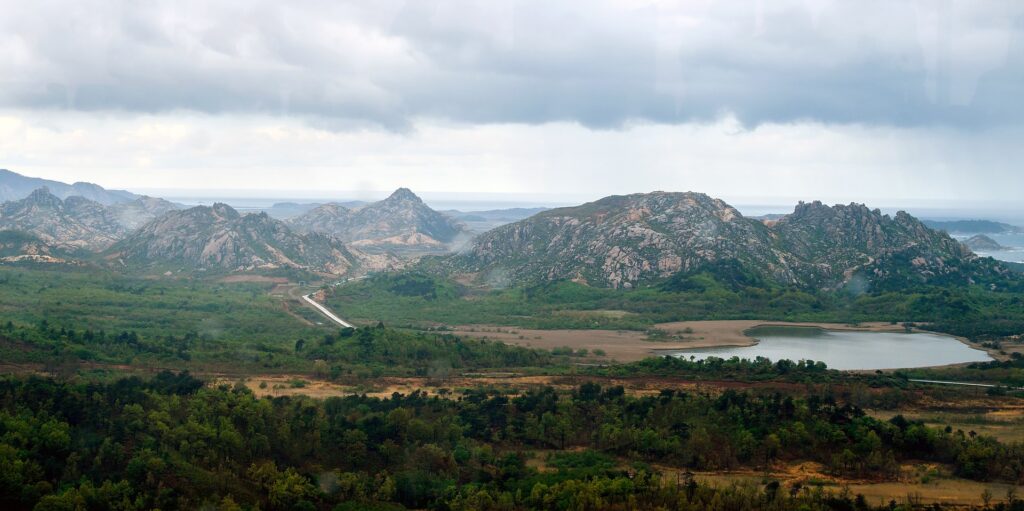On April 21 (Fri), the government will launch the DMZ Peace Trail Themed Tour Routes (Themed Routes) to boost the local economy and tourism. The routes are designed to allow visitors to reflect on the value of freedom, security, and peace while experiencing the ecological, cultural, and historical resources in and around the Demilitarized Zone (DMZ). Online tour registration opened on March 31 (Fri) on the Peace Trail website (www.dmzwalk.com) and the walking tour mobile application, Durunubi. The 11 themed routes are located in 10 different areas around the DMZ: Ganghwa, Gimpo, Goyang, Paju, Yeoncheon, Cheorwon, Hwacheon, Yanggu, Inje, and Goseong. Each route consists of walking and vehicle transportation sections. Participants must travel by car for most of the tour route to ensure their safety and protect wildlife. However, in some areas, they can visit the primary sites on foot, with the opportunity to reflect on the meaning of freedom and peace and discover the scars left by the division of the Korean Peninsula.
Each tour features local residents as tour guides with diverse and fascinating stories behind the tourism resources unique to the DMZ and its surrounding areas. In the Incheon and Gyeonggi-do regions, the Ganghwa Route takes visitors to Dondae (ancient fortress) and the Daeryong Market, which has been the source of livelihood for Koreans who left their hometowns north of the demarcation line. The Gimpo Route offers a panoramic view of the Jogang River, where the Imjin River, Yeseong River, and Han River meet, as well as Seonjeon Village in North Korea.

Moreover, the Goyang Route features Janghang Wetland and Haengjusanseong Fortress; the Paju Route offers visits to Korea’s key peace tourism sites, including Imjingak and Dora Observatory; and the Yeoncheon Route includes a visit to the Horogoru Fortress, which has served as a strategic military position since the Three Kingdoms period.In Gangwon province, participants can look around the old site of the Battle of White Horse Hill (baengmagoji) on the Cheorwon Route and ride a cable car to the top of Baegamsan Mountain, which provided a background for a widely loved Korean song, “Wooden Epitaph,” in the Hwacheon Course. They can also experience the Dutayeon virgin forest on the Yanggu Route, witness the panoramic view of the Baekdudaegan Mountain Range on the Inje Route, and explore the Haegeum River and Mount Kumgang on the Goseong Route. The DMZ is one of the most sought-after areas by both Korean and international tourists. The Korean government has endeavored to transform the zone and the surrounding areas into global peace and eco-tour attractions by preserving their ecological attributes while ensuring sustainable growth. Five ministries (Ministry of Culture, Sports and Tourism, Ministry of Unification, Ministry of National Defense, Ministry of the Interior and Safety, and Ministry of Environment) have been collaborating to develop and operate the DMZ Peace Trail under a memorandum of understanding. The area north of the Civilian Control Line and some parts of the DMZ have gained significant public attention since they opened for public access in 2019 and 2021. Participants are required to agree to an ID check before the tour and pay a participation fee of KRW 10,000. However, the participation fee is collected for the revitalization of the local economy and will be returned to each participant as signature products and gifts.
The government expects that the opening of the Themed Routes will invigorate tourism and boost the local economy in the DMZ and the adjacent areas, which had been lackluster because of military regulations and other reasons. To that end, the government plans to work with the local sectors to develop DMZ into a tourist attraction offering unique peace-related and ecological tour resources with global appeal.
Sophia Kim
US ASIA JOURNAL



